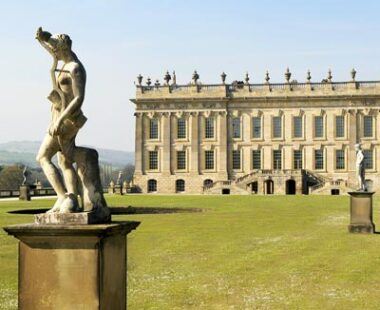By Anna Melton
Derbyshire is a county overflowing with history, from its Bronze Age settlements to nationally important buildings that have shaped the development of the world today as we know it.
The first known settlement in Derbyshire was in Derby. The area is thought to date back to pre-Roman times where merchants and craftsmen settled on the bank of the River Derwent when it was too flooded to cross.
The River Derwent
The Romans are also credited with creating the county’s largest town, Chesterfield, giving it the name – Castra-feld – which literally means ‘standing walls in a field’. This suggests that when the Romans first arrived here they found pre-existing stone-built walls. However, subsequent archaeology has failed to find any trace of them.
The Romans built along the River Derwent. One of the most prominent forts was Derventio (Derby) and a Roman road which ran from Derventio to Buxton. The official town of Derby, however, was not founded until AD 807 by the Danes.

Derby’s stunning Silk Mill building is part of the Derwent Valley Mills UNESCO World Heritage Site
Derbyshire grew rapidly in the industrial era and was among the centres of Britain’s Industrial Revolution. In 1717, Derby was the site of the first water-powered silk mill in Britain. In 1771 the world’s first commercially successful water-powered cotton spinning mill was built at Cromford in the Derwent Valley, developing a form of power that was to be a catalyst for the Industrial Revolution. The importance of this development has led to Derwent Valley Mills being designated a UNESCO World Heritage Site.
The 18th century saw the rise of the Industrial Revolution and many renowned Derbyshire Industrialists, such as Arkwright, emerged. They created the turning point from what was until then a largely rural economy, to the development of townships based on factory production methods.
Historical experience
With the arrival of the railways in the 19th century, Derby became a centre for the British rail industry. A second industrial boom began in Derby when Rolls-Royce opened a car and aircraft factory in the town in 1907. To the north of the county, the creation of the Derby to Leeds railway by George Stephenson boosted Chesterfield’s population, by facilitating the transport of raw materials and manufactured goods.
Historically, mining has played an important role in Derbyshire. Limestone has been mined since Roman times and used to construct many of the buildings. Lead mining was prevalent in the Peak District; its heyday being the 18th century, which saw the greatest volume of ore recovered. However, from 1850 lead mining declined. North Derbyshire is littered with relics of the old lead mines to this day – shaft heads, old levels and a few old mine buildings.

Visit Chatsworth House, one of the country’s finest aristocratic homes
The history of north east and south Derbyshire is characterised by coal mining. In 1947, there were 68 collieries in Derbyshire; today there are none, with the last pit, Markham Colliery, closing in 1994. Alongside coal mining, south Derbyshire also boasted pottery as its other major industry. While mining has disappeared Derbyshire is still renowned for pottery, with Denby Pottery and Royal Crown Derby remaining in the county to this day.
Alongside the industrial might of Derbyshire sits some of England’s finest aristocratic homes and estates such as Haddon Hall and Chatsworth. Derbyshire is a county rich in history reflecting every aspect of England’s historical experience, from agriculture, mining, textiles to poverty, plague and prosperity. For history buffs, Derbyshire really does have it all.
Read more about Derbyshire and the Peak District











